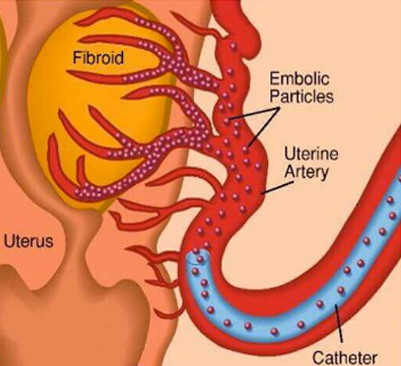No woman wants to hear that she has fibroids, unfortunately however, as long as you have a uterus, there is a chance that you may develop fibroids at some point in your life. These chances are higher in black women and women who have positive family history of fibroids.
The good news is that there are a range of treatment options available.
Since most fibroids stop growing or may even shrink as a woman approaches menopause, there is usually the option of “watchful waiting.” With this approach, the health care provider monitors the woman’s symptoms carefully to ensure that there are no significant changes or developments and that the fibroids are not growing. Small, asymptomatic fibroids that do not indent the endometrial cavity will usually not require treatment other than observation and vigilance.
In women whose fibroids are large or are causing significant symptoms, such as pain or heavy menstrual bleeding, treatment may be necessary.
There are different types of treatment for fibroids and the type of treatment suitable for each woman would depend on a number of factors including:
- Overall health and medical history
- Extent of the disease (size, number and location of fibroids)
- Patients tolerance for specific medications, procedures, or therapies
- Expectations for the course of the disease
- Patients opinion or preference
- Desire for pregnancy
Medical Treatment
The growth of fibroid tumors is estrogen-dependent. This is why when a woman enters the menopause and stops making female hormones, fibroids tend to shrink in size on their own. Conditions that mimic menopause can also reduce the size of fibroid tumors. The most common of these treatment is with a medication such as lupreulide acetate (Lupron), interrupts the normal hormone pathway between the brain and the ovaries, thereby preventing hormone production. However, this type of medication can only be taken for a limited period (usually 6 months) and once the medication is stopped the fibroids will usually regain their original size within a few months. This medication is therefore only a “temporary fix”; and it is used mostly to decrease the size of large fibroids in order to make their ultimate surgical removal easier or to help a woman buy some time until spontaneous menopause sets in. Because this is such a temporary measure, it may not be ideal for many women, but women who are almost at menopause and wish to avoid surgery are more likely to benefit from this option.
Also for patients who have heavy periods, using this medication prior to planned surgery can help shrink the fibroid(s) and prevent them from continued heavy menstrual bleeding and such that the patient will enter surgery in a non-anemic state. This will also help them recover quicker from surgery.
Surgical Treatment
The mainstay for the treatment of fibroid tumors is surgical removal (myomectomy).
Some fibroids can be removed vis minimally invasive laparoscopic or hysteroscopic surgery but this depends on the location and size of the fibroid(s). For laparoscopic surgery, only a few small cuts will be made on the abdomen while for hysteroscopic surgery, the fibroids can be removed through the vagina, without any cuts being made. This is ideal for the removal of small and accessible superficial fibroid tumors,
However this option may not be suitable for women with many fibroids or large fibroids. Such women would be candidates for open surgery. While laparoscopic myomectomy requires but a few days (at most) for post-operative convalescence, Open (abdominal) myomectomy usually requires 6-8 weeks of recovery.
As with every surgery, there are some risks involved however when done by well trained and experienced gynecologists, these surgeries are usually quite successful. It is important that fibroid surgery be carried out by a GYNECOLOGIST as they are specially trained to operate on the uterus.
Uterine Fibroid Embolization.
This is a minimally invasive, non-surgical procedure. Embolization shrinks fibroids instead of cutting them out.It works by blocking the blood supply to each fibroid, thus stopping it from growing. Embolization doesn’t involve cutting or cause any scarring. And embolization is extremely precise. It addresses only fibroids, leaving all other tissue healthy and whole.
The uterus and reproductive organs are left whole, uncut and without scars.
This is a great option for women who are keen to avoid surgery and it also has a much longer effect that the medical/hormonal treatment option.
However this option may not be best for women who still desire to have children. This is due to the fact that the procedure involves use of radiation and this may have a negative effect on fertility.

If you or anyone you know has been diagnosed with fibroids, discourage them from ingesting herbal concoctions. These have not been shown to cure fibroids. Instead encourage them to see a gynecologist to discuss what treatment option would be best for them..







